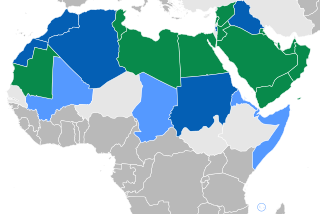

This article may need to be rewritten to comply with Wikipedia's quality standards. (August 2024) |
| Part of a series on |
| Economic history |
|---|
| Particular histories of |
| Economics events |
| Prominent examples |
Economic history of the Arab world addresses the history of economic activity in the Arabic-speaking countries and the stretching of Atlantic Ocean in the west to the Arabian Sea in the east, and from the Mediterranean Sea in the north to the Horn of Africa and the Indian Ocean in the southeast from the time of its origins in the Arabian peninsula and spread in the 7th century CE Muslim conquests and since.
The regions conquered in the Muslim conquest included rich farming regions in the Maghreb, the Nile Valley and the Fertile Crescent. As is true of the world as a whole, agriculture dominated the economy until the modern period, with livestock grazing playing a particularly large role in the Arab world. Significant trade routes included the Silk Road, the spice trade, and the trade in gold, salt, slaves and luxury goods including ivory and feathers out of sub-Saharan Africa.
Important pre-modern industries included tanning, pottery, and metalwork.
